Ultimate Guide to Exercises for Lumbar Herniated Disc Relief 2
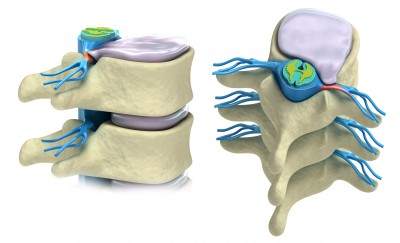
Did you find our previous article, “Disc Herniation Part 1,” helpful but are still battling discomfort? Are you eager to discover exercises that can effectively reposition your herniated disc and enhance your well-being? You’re in the right place.
In this comprehensive guide, we’ll cover:
- Effective Exercises for Repositioning a Herniated Disc: Learn the top movements to gently coax your disc back into alignment, reducing pain and improving mobility.
- Stabilization Techniques to Prevent Disc Displacement: Discover exercises that strengthen your core and back, ensuring your discs stay in place.
Understanding Lumbar Disc Herniation:
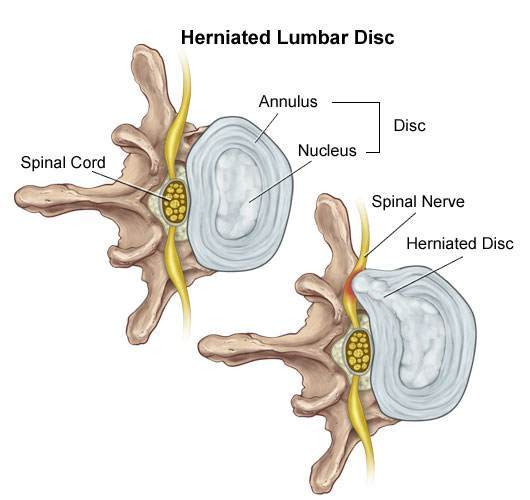
A herniated disc occurs when the disc’s nucleus breaks through the annulus, as shown in the illustration from neurosciences.beaumont.edu. But what triggers this displacement? The primary culprit is forward bending, which compresses the disc (think of it as a jelly-filled doughnut) and can lead to the annulus fracturing, allowing the nucleus to protrude and press against nerves.
Why Does it Hurt?
The disc’s exterior is tough cartilage, while its interior is softer, akin to mucus. Applying pressure on one side forces the inner material to the opposite side, similar to squeezing a doughnut. When a herniated disc or inflammation puts pressure on a nerve, pain ensues. The key to relief is applying counterpressure to reposition the disc.
For a deeper dive into herniated discs, refer to “Disc Herniation Part 1: Best Self-Treatments for Lumbar Disc Herniation.“
How to Apply Counterpressure:
The strategy involves bending your spine backwards or into the extension to shift the disc away from the nerve.
Exercises to Reposition a Herniated Disc: Note of Caution:
Initially, these exercises might intensify your pain slightly. If pain significantly worsens or radiates further down your leg during these exercises, cease immediately and consult a professional.
Exercises for Lumbar Herniated Disc
#1 Prone Lying Lumbar Herniated Disc
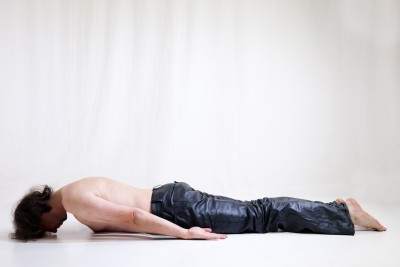
- Lie face down or prone in bed with your elbows tucked in under your side:
- As soon as you get up in the morning you should lie prone (face down). By getting in this position, your lower back becomes more arched, or as doctors say, you increase your lordosis.
- The increased lordosis pushes on the back of the disc helping to bring the nucleus forward into the correct position.
#2 Sphinx pose in Yoga For Lumbar Herniated Disc
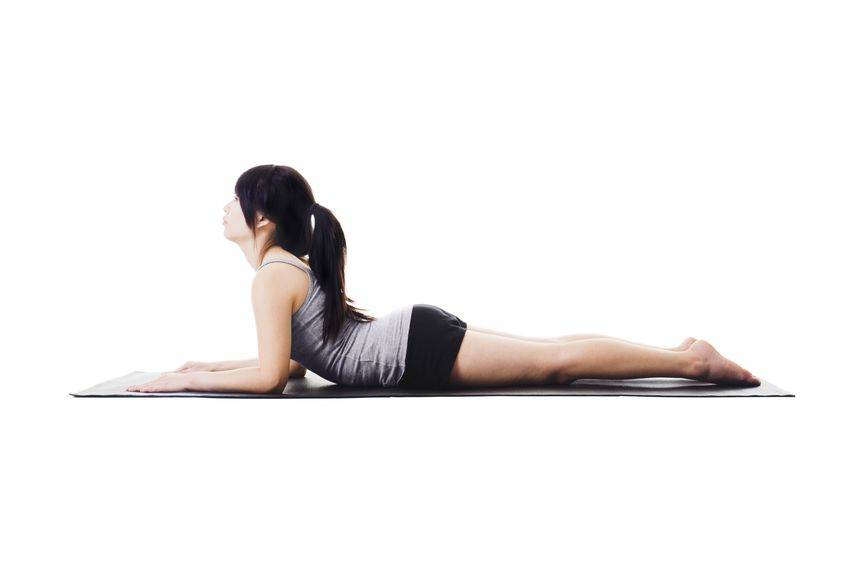
- Get into the prone position lying down on your stomach.
- Next, get on your elbows. If you have a hard time with this position go back into the prone lying position.
- Do these exercises hold each time for 1-2 seconds 6-8 times per set? This exercise can be repeated every two hours throughout the day.
Asses yourself. If the pain has decreased or the pain has moved away from the leg or thigh and into the hip or buttock, this is an improvement. Even if the pain is increased in the back but relieved in the leg this is an improvement and a green light that you should continue this exercise. You also get a green light if there is no difference at all.
- If your self-assessment gives you the green light, move on to the Cobra exercises just below.
- If your thigh or leg pain is worse, then stop right away.
- If your lower back, thighs and legs are the same you get a green light, so move on to the Cobra exercises.
#3 Cobras For Lumbar Herniated Disc
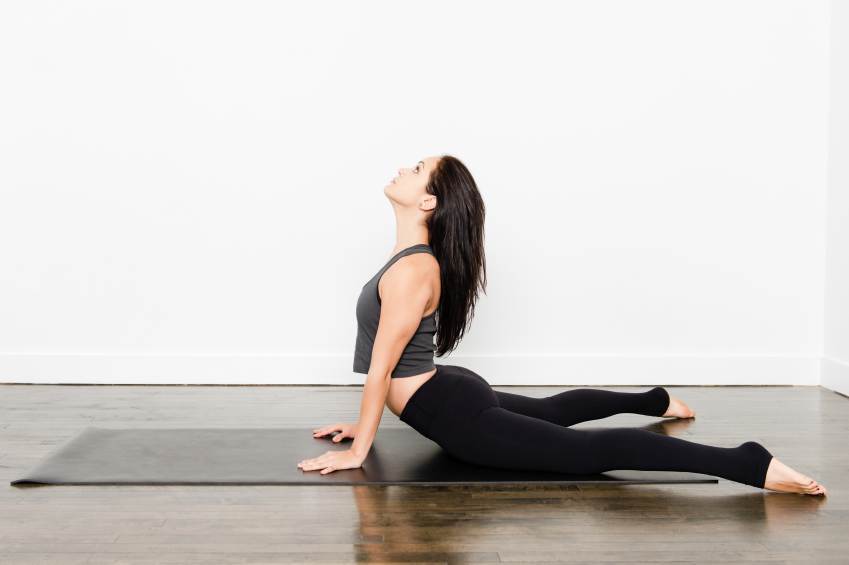
- Lie down face down with your hands underneath your shoulders.
- Push up from as high as you can until your lower back stops you or your elbows are straight.
- The pelvis should still be on the floor and the lower back muscles relaxed.
- Do these exercises hold each time for 1-2 seconds 6-8 times per set? This exercise can be repeated every two hours throughout the day.
Asses yourself. If the pain has decreased or the pain has moved away from the leg or thigh and into the hip or buttock, this is an improvement. Even if the pain is increased in the back but relieved in the leg this is an improvement and a green light that you should continue this exercise. If your thigh or leg pain is worse, then stop right away.
#4 Standing Extensions Lumbar Herniated Disc
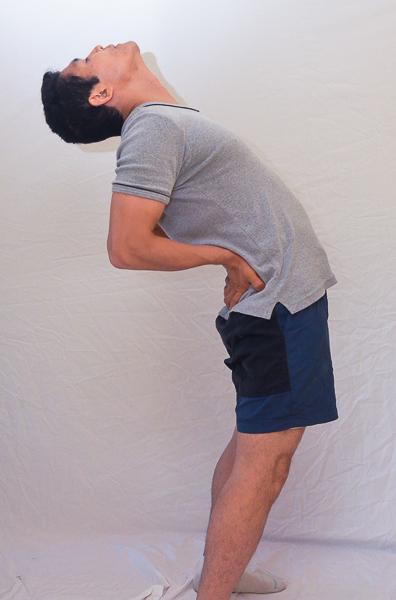
- Stand straight and put your hands behind your hips with your fingers facing down.
- Push your hands into your pelvis so that your lower back arches.
- Don’t use your lower back muscles
- These exercises can be done 6-8 times for 1-2 seconds. This exercise can be repeated every two hours throughout the day.
Stabilization Exercises: Prevent Your Disc From Coming Out By Having A Stable Spine.
#1 Cat-Camel or Cat-Camel For Herniated Disc
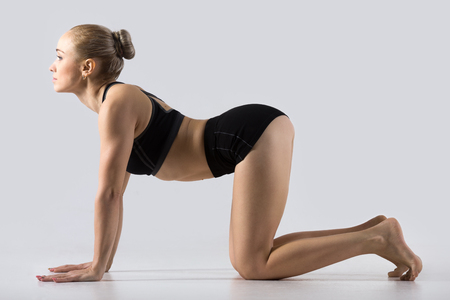
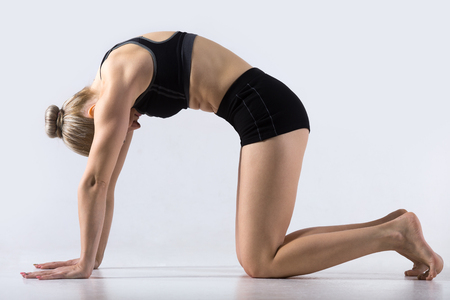
- On all fours with your knees under your hips and hands under your shoulders.
- Inhale and let your belly fall downwards toward the floor as you look up toward the ceiling for 2 seconds.
- Exhale and arch your back up as far as it will go or until you feel pain. You should not feel pain with this exercise, otherwise you are going too high.
- At the same time bend your neck forward and look toward your navel.
#2 Curl-Ups
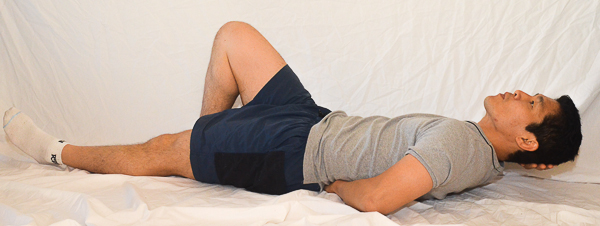
- To start, one foot is bent and the other is straight.
- One forearm goes under the arch of your lower back to support it.
- The other arm is supporting your head.
- Your head and neck come up as one block until your shoulder blades clear the floor.
- Do three sets of 5 working your way up to 10. If it’s easy, then hold for a couple of breaths.
#3 Squats
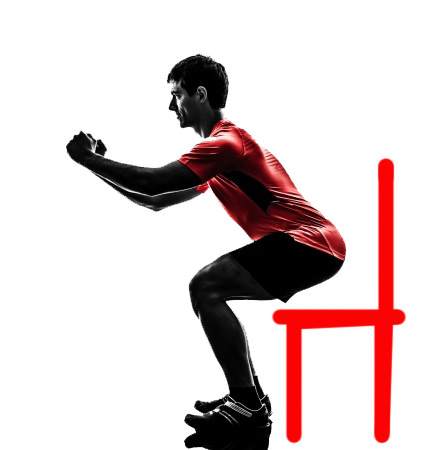
- Stand in front of a chair as if you are going to sit on it.
- Stand with your feet facing slightly more outward than your knee.
- Make sure your butt comes out, and keep lowering your butt until you touch the chair.
- Practice 3 sets of 10.
#4 Bird Dog
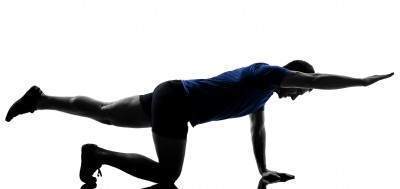
- Get into a crawling position with your hands and feet shoulder-width apart.
- Harden your core by contracting your abs and lower back. This is called bracing.
- Lift your arm first. If this is easy, then lift your leg only. If that is easy, then lift the opposite legs and arms, for example, right leg, and left arm.
- Want to make it tougher? Try lifting an arm and leg on the same side.
- 3 sets of 10. If you are shaking a little or cannot balance quite right, you’re doing the right exercise for you, i.e. lifting just the leg or arm might be easy, but lifting opposite arms and legs might put you off-balance a bit. Make sure you are stable before going to the advanced bird dog.
Tell us what you think in the comments below and like us on Facebook. This Toronto Downtown Chiropractor will answer all questions in the comments section. Let us know your vote for the best Toronto chiropractor in the comments section.
References
1. J Med Genet 2002;39:387-390 doi:10.1136/jmg.39.6.387


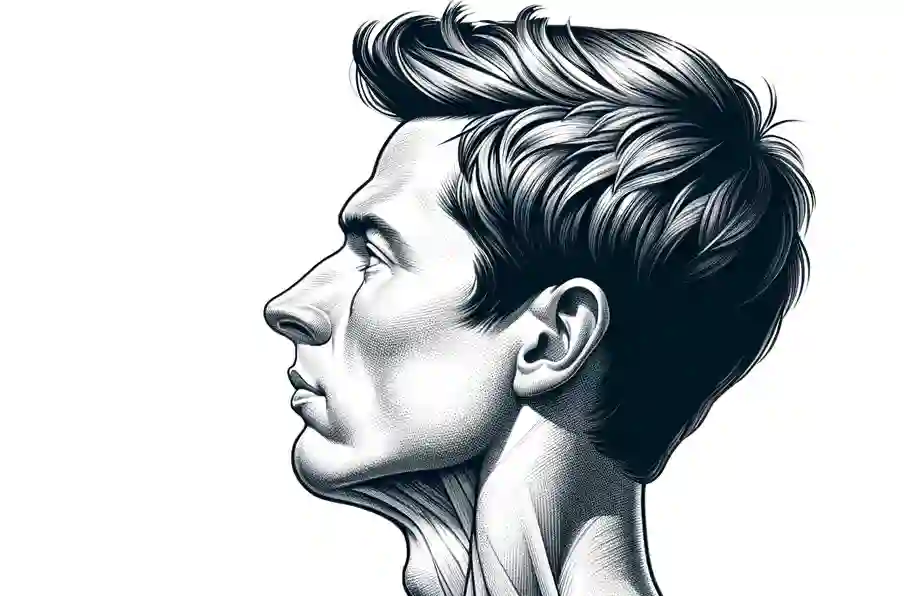

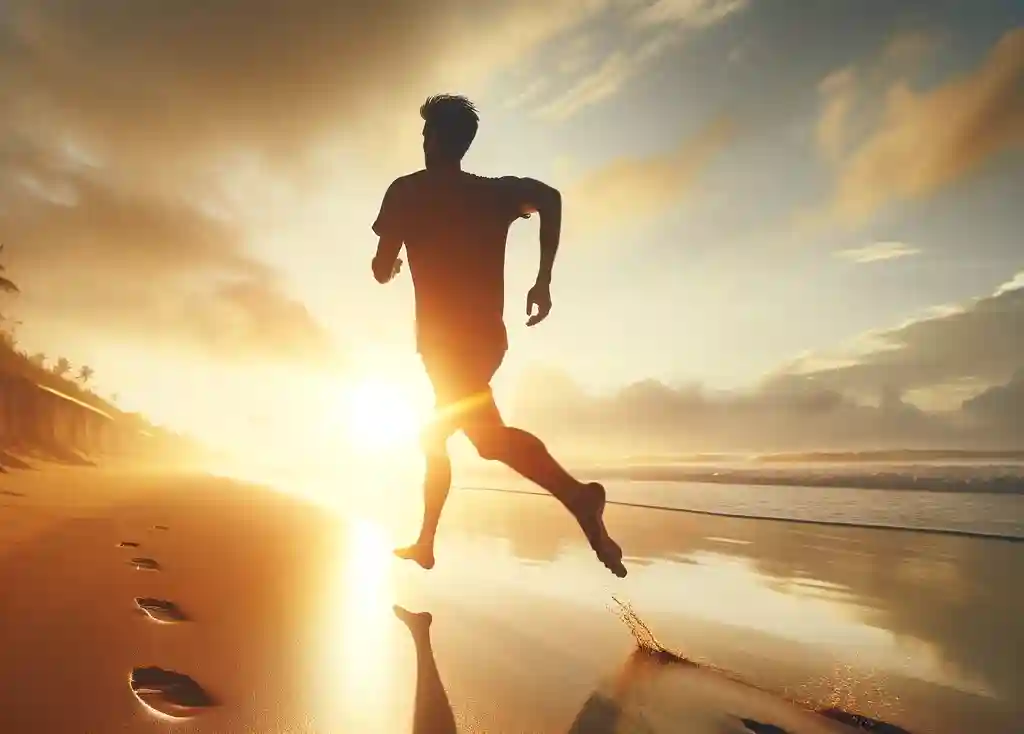

I am a 19 year old woman and have a herniated disc in the l-4/l-5 and l-5/s-1 discs ( also with what has been described to me as also a slight congenital defect that puts some pressure on this area). This happened after I had played fairly competitive tennis for years, and then continued to play and do some weightlifting (something I now know was really stupid) for another two and a half years with no let up. I have continued to feel significant though less intense and less ever-present pain for the last year and a half, and have had a little bit of physical therapy that has focused on stabilizing muscles in my legs, while keeping a neutral spine and engaging the abdominals. I have received three epidural cortisone shots, which have given me the most relief, although due to other medical reasons I cannot regularly continue to receive them the rest of my life, and don’t take all the pain away. I have also been evaluated by a surgeon, who said that my age and type of pain made me a bad candidate for surgery at this time. One problem I seem to be having is that while I occasionally have very light sciatic pain, most of my pain is directly in the low back, although the type varies slightly depending on whether I have been sitting up, standing, lying down, walking, or twisting. Most advice seems to be centered on people mainly suffering from sciatica, or those who have recently injured themselves, not those of us long-suffering but attempting some rehabilitation with direct low back pain.
My first question is will my back ever heal, even though it was (if I’m describing this the correct way) re-herniated multiple times because of continued impact?
My second question is which cardio exercises won’t hurt my back long term, but actually keep me in shape? I find myself used to being very athletic and in shape because of my tennis days, and in the last year and a half essentially have either felt too much pain to exercise, or don’t know what will hurt, and the inactivity is killing me!
My third questions are which ab/core and leg exercises won’t hurt me?
Fourth, is there anything that would help the pain of prolonged sitting up? I try to keep good posture with a neutral back, but hours studying in the library or going to class take their toll. The few exercises I have been given seem mainly to focus on the pain I receive walking or standing.
Thank you so much. Sorry if my explanation is not very good.
Let me thank you in advance for giving proper guidence
I want to discuss my case as some 3 months ago i had a back pain and
after taking some medicines i was ok but after some time i felt that i have
a pain in my left leg.I went to physio therapist clinic and he referred me to some excerscises said you have a muscle problem in your left leg and you have to do
some exercises for stretching the musce. I did those exercises for one
months but there was no betterment. Meanwhile i also noticed that i feel
pain in my lowerback as well and this pain went down to my ankle and my left ass. This time i went to another hospital he said i think its heriniated disc He has
arranged an MRI and suggest for spine surgery to clear nerve root.
talking about MRI report. I had a disc herniation in L4-L5 of lumber spine cause nerve root of my left leg little bit block.so that i have huge pain in left leg and ass cause i cannot walk.
It has been almost 3 months since it started.Please suggest me exercises and also advise correct posture to sit and while driving.
I am waiting for your reply
Once’s again thank you sir
I also suffer from herniated disk, it is a year and half now. In the beginning I was not able to sit at all, not even in washroom. I could not feel my leg from knee down, there was only complete numbness, cold and constant pain. I could not even lift leg of the ground. I have seen neurosurgeon after 5 months and by that time doing different researches I was getting bit better and even went back to work part time (sitting job). In his opinion that was good sign and he said I should continue doing everything I was doing at that point and will get better.
Now I am back full time to work, but my life is still so limited. Even small change in weather or temperature aggravates me a lot. Even getting in air conditioned room gets mu muscles contracted and stiff and pain starts. If the chair is not proper I hurt. I can only drive van no car where my knees are higher than my hips. Shoes are my nightmare. When it is humid I am in pain, whole winter I was wearing wool long johns, and that have saved me. Very often I wake up in screaming cramps in my calf mostly but also in my thigh. My doctor does not care a lot, he is a suborn men and even me going to physio therapist and massage therapist was my idea not his. Every time I ask for opinion or some help he tells me I can go to neurosurgeon again but I should be prepared and ready to accept surgery. I am getting tired and discouraged even with things I was so diligent about. What else is there to try, and how long should I be looking for answers. I don t see improvement any more and I don t know what else is there to try or how long should it take for me to get better now. I know this is a very long post but I really need some more ideas and input. My physio helps to relive stiffness but not for long, Massage therapy same. They both are not sure why I cramp or get so tight and stiff.
Hello Dr Ken,
I have small left paracentral disk protrusions at T11-12 and L4-5.
Would you suggest any exercises?
My doctor recommended to have steroid twice a year. I had one already. It is help just a little.
I feel not comfortable most of the time.
Thank you.
Ok thx dr ken so im getting the injection of cortisone in 1 week in the mean time if exercise hurt and the herniation is big is the best way to sit stil and not move til the injection?
Ok thx very much and ya i know about other injection but they are 8 months delay
Hi dr ken i have 2 herniated disc L4L5 that is the small one and L3L4 doctors say is very big herniation im only 24 yrs old these exercise where given to me by a physiotherapiste but they cause me more pain when i do them even the prone lying face down position what type of exercise shud i do since these cause pain? Thx
Hi I’m seeing a surgeon on Monday to talk about options… My MRI shows 17mm bulge at l5s1. Do you think surgery is avoidable? Thanks in advance
I was told I had disc hernias in my upper/middle back. They cause tremendous amounts of pain for me. They have checked my movements & state I have a 7% person disability due to that, as well as a protrusion on my right knee cap. What would be recommended for exercise & what would be not recommended? Thanks.